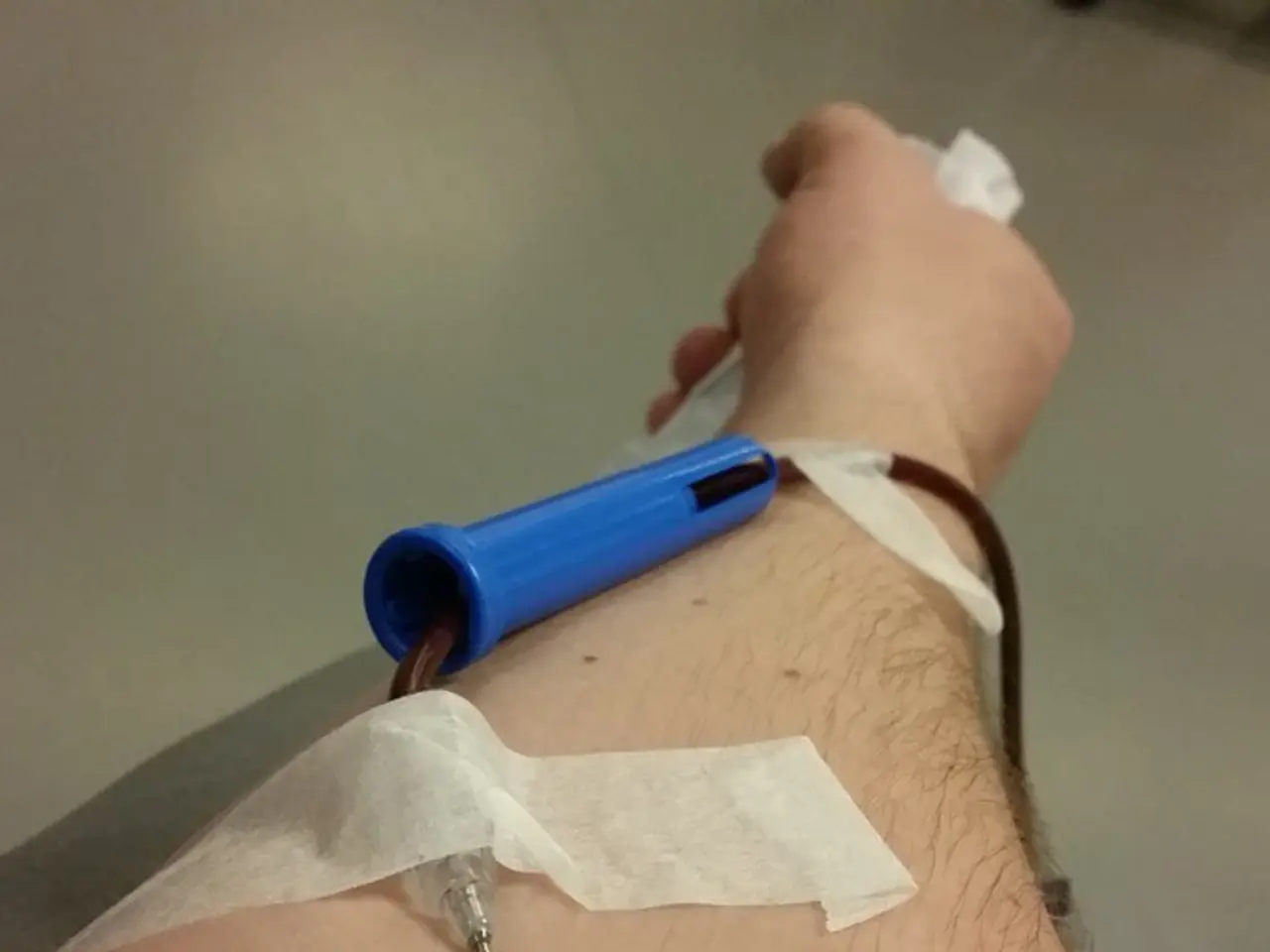Healthcare company inks deal with three European medical laboratory organizations for the supply of 30 or more autonomous blood-drawing devices
In the realm of MedTech innovation, BHealthCare, a pioneering company specialising in autonomous robotic solutions for peripheral vascular access, is making strides with its groundbreaking device, HEIVA.
Since its inception in late 2016, BHealthCare has raised significant capital funds and grants totalling 13.5 million EUR (approximately 15 million USD). This funding has been instrumental in the development of HEIVA.
HEIVA is poised to make history as the first robotic medical technology to autonomously draw blood samples from among tens of thousands of daily patients at selected major European medical laboratory groups. This is a significant step towards automating manual tasks in healthcare settings, particularly in light of staff shortages of highly-skilled personnel.
As of July 2025, BHealthCare has secured supply agreements with three major European medical laboratories, resulting in over 30 pre-orders for HEIVA. This move indicates that HEIVA is transitioning from the development phase into commercial distribution stages in Europe.
The exact future plans beyond these supply agreements are not explicitly detailed, but the procurement by major labs suggests that BHealthCare aims to scale deployment and integration of HEIVA in clinical settings in Europe shortly.
BHealthCare is currently engaged in a fundraising round with the objective of completing HEIVA's pivotal clinical trial and launching its industrial manufacturing process. However, further details about this round and the clinical trial remain undisclosed.
HEIVA is currently undergoing the registration process to obtain a CE mark and GCC approval. The anticipated CE marking for HEIVA is slated for next year.
The deployment of HEIVA in European medical laboratories underscores the importance of data in helping MedTech companies adapt to market changes. Additionally, the successful integration of HEIVA in clinical settings highlights the crucial considerations for successful laboratory automation.
On a broader note, the EU is implementing stringent cybersecurity measures on MedTech to ensure the safety and privacy of patient data. This development is a testament to the increasing importance of cybersecurity in the MedTech sector.
[1] Source: Digital Health & AI Insights, Insights, Medical Device Manufacturing Insights.
- BHealthCare's innovative digital health technology, HEIVA, is set to revolutionize patient care in Europe, with a focus on automating medical-conditions diagnostics and health-and-wellness checkups.
- The company's foray into finance, having raised significant capital, is integral to advancing scientific research and development in medical-conditions management, powered by business and technology.
- The successful deployment of HEIVA in European medical laboratories underscores the importance of data-driven medicine in addressing staff shortages and adapting to market changes, alongside the significance of cybersecurity in protecting patient care information.
- As HEIVA transitions from development to commercial distribution stages, the company continues to focus on ensuring compliance with stringent European regulations regarding cybersecurity, providing a promising future for digitally-driven healthcare solutions.




